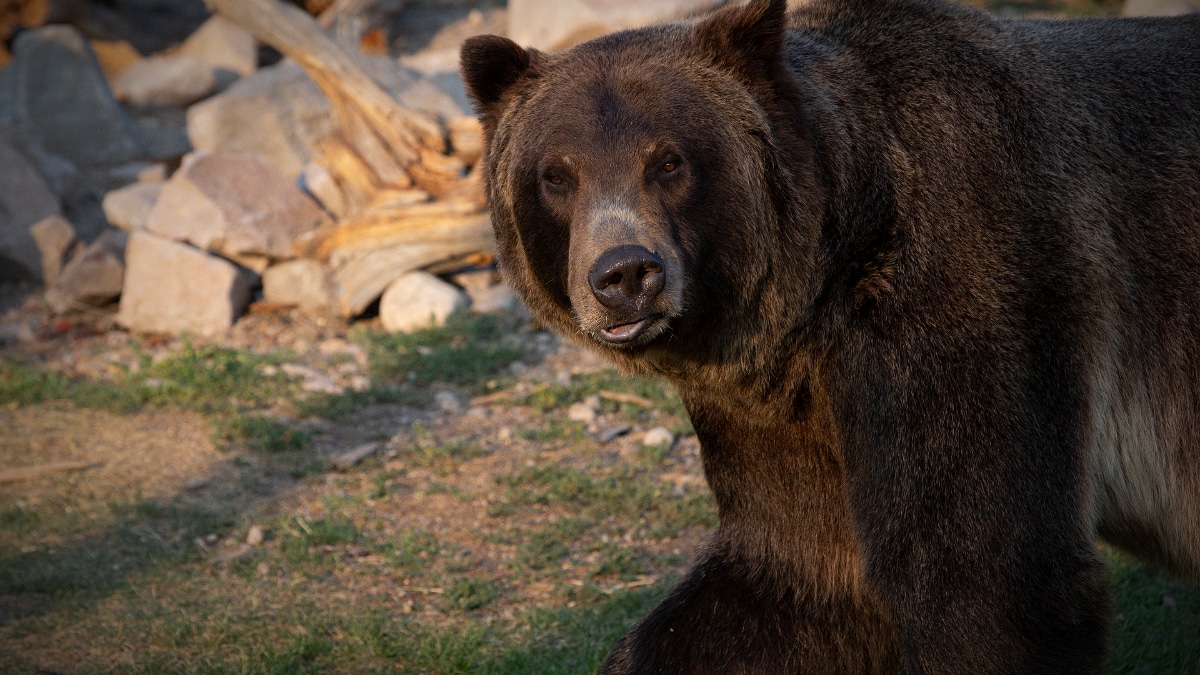
Today is Yellowstone day at National Geographic as America’s most stunning natural treasure will be accessible to millions via a live feed. Not just on Nat Geo but also on Nat Geo WILD too!
This special event will usher in the week-long programming titled “America’s National Parks” which will take us to some of the most treasured natural spots in our country.
These locations are very special and available for all people to enjoy, in times when billionaires are buying up huge swaths of the west and beyond at alarming rates.
What is Yellowstone?

Active super-volcano Yellowstone became a national park on March 1, 1872, thanks to President Ulysses S. Grant who signed the Yellowstone National Park Protection Act into law.
The act served to protect the 2 million acres of mountain ranges, cyan blue geysers, and sprawling landscapes for future Americans to visit and treasure.
The bison rule the road too! A few years back, Nat Geo hosted Monsters & Critics for a four-day trip to Yellowstone with Nat Geo WILD guide Casey Anderson for Untamed Americas. Our tour bus was caught in a famous “bison traffic jam.”
The free-roaming bison herds still roam free and have since the prehistoric times. They fiercely protect their young and all traffic in the park must yield to them.
One of the coolest things about this massive park is the hot springs.
Almost half the world’s hydrothermal features are found at Yellowstone, with 10,000 hydrothermal attractions such as bubbling ultra hot springs, mudpots, fumaroles, travertine terraces and the most famous of all, the spewing geysers.
Who will be the guides?

Journalist Josh Elliott and Animal Expert Chris Packham co-host and Jenna Wolf assists as they report live from both Nat Geo’s Base Camp and all throughout the park.
Wolfe appears at the American Prairie Reserve (APR), a partner of one of National Geographic’s Last Wild Places initiative partners. Their goal is protecting 30 percent of the planet by 2030.
APR is one of the world’s remaining wild intact prairie grasslands and is working to create the largest wildlife reserve in the lower 48 states.
Elliott, Wolfe, and Packham work in tandem with eight live crews, take us from the Gallatin Mountain Range, Lamar Valley, Grand Prismatic Spring to Old Faithful and many more iconic and hidden locations.
Emmy Award-winning cinematographer Bob Poole and wildlife cinematographer Susan Gibson will capture footage of herds of bison and elk with their newborns as they take their first steps and try to cross fast-flowing rivers while Gibson tracks Grizzly 399 — a famous wild grizzly bear with her two cubs in Grand Teton National Park.
Both Poole and Gibson will be joined by Emmy Award-winning cinematographer Jeff Hogan and a top-notch crew as they film animals, such as cougars and their cubs and the area’s largest wolfpack, the Wapiti.
What might be seen?
Based on the time of year, the wildlife might be teeming. The Greater Yellowstone ecosystem will emerge from months of frozen winter. Flowers are in full bloom and snowmelt means the rivers are rushing.
New life abounds and we may see red dogs (bison babies) scampering next to their mothers, cougar cubs venture out from their underground dens, black bear cubs learn to hunt and bison must protect their young calves from apex predators.
This second season promises more animals, thanks to more cameras and live locations.
Taking place across three states — Montana, Idaho, and Wyoming — the four-night event, which garnered 13 million viewers in its debut last summer, covers the expanse of nearly 3,500 square miles of the Greater Yellowstone ecosystem, one of the largest on the planet.
National Geographic quote:
“Yellowstone Live is all about our ongoing commitment to give viewers unprecedented access to the most stunning, natural treasures on Earth. This four-day live event is an epic journey into the heart of America’s most iconic national park at its absolute peak to explore the full majesty of this magnificent land and witness all the wonder of new life bursting forth in ways that will create an unforgettable experience for the entire family.” – Geoff Daniels, executive vice president of global unscripted entertainment at National Geographic.
What kinds of cameras are used?
There will be 25 cameras strategically placed across multiple locations:
● Burrow Cam
● Bison Cam
● Beaver Den
● Eagle Nest
● Grizzly & Wolf Discovery Cent
● Yellowstone After Dark: The state-of-the-art SELEX system thermal camera.
Yellowstone Live premieres at 9/8c on June 24-26 and the simulcast starts tonight, Sunday, June 23, at 10/9C, ON National Geographic Channel.